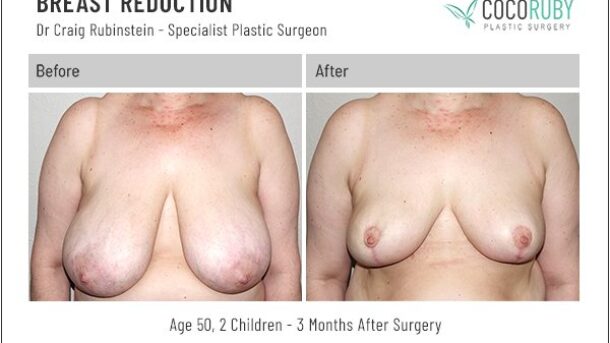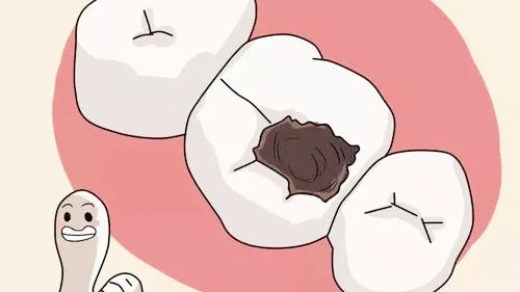Recovery after Breast Reduction
Breast reduction is a frequently performed surgery in women of all age groups, but how is the recovery afterwards? What’s the timeline? And how can you speed it up?
Excessively heavy breasts can be problematic. They get in the way and cause all kinds of upper body pain. That’s why women, teens and mature adults alike, sometimes opt to get breast reduction (also called reduction mammaplasty).
Recovery after breast reduction can take 4-6 weeks. The symptoms are generally not too unpleasant and can be handled with some extra care. Breast pain, swelling, tingling, and bruising are all-natural results of breast tissue manipulation However, that doesn’t mean we can alleviate them.
Our surgeons take extra care during surgery to make sure your wounds are set to heal in the best way possible. After surgery, they will provide you with constant support throughout your recovery period.
Continue reading to see how recovery will look after breast reduction and learn some tips and tricks to ensure a smooth process!
Get the Breast Reduction Surgery guide!
Read more about Breast Reduction
How Is Recovery After Breast Reduction?
Post-breast reduction recovery might be somewhat uncomfortable, but it generally passes smoothly.
The recovery period after breast reduction (with or without lift) generally takes around 4-6 weeks, after which you can gradually get back to your normal life. During this time, you will experience some pain, bruising, numbness, and swelling, especially during the first week:
- Pain: As with any surgery there is some degree of pain afterwards. The breasts are rich with neuron endings, and breast reduction involves a moderate degree of tissue manipulation. This translates to pain after surgery, however, it’s usually not too bad. Our plastic surgeons prescribe a couple of effective painkillers that can make recovery painless.
- Swelling: During breast surgery, your body reacts to the manipulation by releasing inflammatory and healing fluid into the wounds. These will accumulate in your breast area, but they’re a normal part of healing. Generally, swelling reaches its peak on the 3rd-day post breast reduction surgery. It can also involve some parts of your stomach and upper abdomen since it’s close to the surgical field.
- Bruising: After surgery, the bruises will be red and purple. As the days pass, they will start turning yellow-green after a week and they will almost completely fade away after 2 weeks.
- Tingling: During surgery, damage occurs to your nerve endings because of tissue manipulation. This sometimes leads to numbness in the nipples and breast skin. The numbness after breast surgery is usually temporary. However, it can last for a few months.
These are all normal parts of breast reduction recovery. Numerous tips can ease the symptoms and make you more comfortable as you heal.
Breast Reduction – Recovery Timeline
We’ve put together a detailed timeline to show how breast reduction recovery should go.
Day of Surgery
Immediately after your breast reduction, you will be woken up from the general anaesthesia and transferred to the recovery room to regain consciousness. Your anaesthetist will ensure you’re given enough medications to make the process as smooth as possible.
Your surgeon may use drains, if they do you will have a couple of plastic drains placed into your wounds. These prevent the collection of fluids and the formation of seroma. These can generally be taken out a few days post-surgery.
If you’re feeling well enough and your surgeon is happy, you may be able to go home a few hours post-surgery. Sometimes, you’ll be kept overnight for observation.
Days 1-3
During the first couple of days after your breast reduction, you’ll naturally feel sleepy and a little uncomfortable. This is a natural effect of tissue injury and general anaesthesia, and you should slowly, but steadily, improve.
You can expect pain around your breast and armpit area. The medications our plastic surgeons prescribe are usually enough to take care of the discomfort.
Swelling is usually at its peak on the third day after your breast reduction. Some home remedies like ice packs and wet towels can help reduce the swelling and make it go away faster.
You should also expect dark red bruises on your breasts, around your wounds, and in the armpit region. As time passes, these will fade away gradually.
In general, during the first 3 days after your breast reduction, you should stay home and avoid any physical activities. Get a good book or some movies to help the time pass while waiting for your breasts to fully heal.
Week 1
After the 3rd day, the symptoms will have hit their peak. From this point on, you should start improving.
It goes without saying, but you should take at least 1-2 weeks off work. During this time, you should rest. In other words, no chores, work or sports, just rest.
You will be asked to wear a compressive bra while recovering from breast reduction. You can wear it for as long as you want, but it is generally recommended for at least 4 weeks after reduction and lift.
Week 2
During the second week, you can start to gradually get back to simple chores that don’t require too much arm and upper-body activity. Doing sports is strictly off-limits at this time.
Week 3
2 weeks post breast reduction surgery, you can generally get back to work.
You can perform the most basic daily physical tasks with no problem. You can start performing some light exercises like walking. In fact, it would be good to improve your blood circulation and boost breast healing. Breast swelling will continue decreasing, and you should no longer need painkillers.
Weeks 4-6
Your symptoms should continue to improve and by 1-month post breast reduction, not only should the pain be gone, but swelling will be significantly reduced. Furthermore, the bruising should have almost completely faded away.
By 4 weeks after reduction, your breasts will have almost reached their final size. Any remaining swelling should be minimal.
Moreover, if you have struggled with the surgical bra you can stop wearing your surgical bra and start sleeping braless after this point. That being said you still need to wear support garments during the day.
After 6 weeks
By 6 weeks, the only remaining sign of breast reduction will be the cosmetic improvement in your breasts and their smaller size. There will be no more pain, no more bruising, and the swelling will be almost completely gone.
You can go back to doing sports and performing upper body training. You might want to start easy, though, and gradually get back to what you were used to.
The breast reduction scar may be around the nipple or along the bottom pole of your breasts depending on the technique used. This scar will continue to develop and improve over the next 6 months to 1 year before it takes its final shape and form. The colour will change, become darker, and then start to fade. The colour of your breast reduction scar (or any scar) depends on your unique skin type.
Breast Reduction – Tips To Recover Faster
You shouldn’t worry too much about the recovery process after breast reduction. We’ve put together some tips and tricks, dos and don’ts, and home remedies to help you go through a speedy and normal recovery after reducing your breasts.
Dealing with Swelling and Bruising
Bruising and swelling are unavoidable after breast surgery. Yes, they are annoying, they prevent you from enjoying the full benefits of breast reduction for at least a few weeks after surgery. Here’s how you can get rid of swelling and bruising faster:
- Use cold towels: Cold towels can help reduce swelling after breast reduction. The cold temperature causes blood vessels to constrict and hence they’ll leak less fluid, which reduces swelling.
- Use ice packs: Ice packs are another way to deal with swelling and bruising after breast reduction. You can buy reusable ice packs since they can come in handy during the first 2 weeks of recovery. Ice packs can also help reduce breast pain.
- Wear a surgical bra: You will be asked to wear a surgical bra, or alternatively a sports bra, for the first 4 weeks after your breast reduction. You need to wear it night and day to keep your breasts from swelling too much. These compressive bras prevent fluid from accumulating by applying direct pressure to the injured breast vessels. They can also prevent any postoperative bleeding.
- Elevate the head of your bed: By elevating your upper body, gravity will pull fluid down, preventing it from going to your breasts, which is what causes swelling. You should sleep at least 3-4 weeks with an elevated torso after breast surgery.
- Use the treatments we prescribe: Our surgeons prescribe healing treatments to reduce swelling and bruising after breast surgery, like Arnica and Arginaid. These contain many vitamins and active products that ensure normal and rapid tissue healing.
Maintain a balanced diet: A nutrient-rich diet and proper hydration are essential to prevent swelling after breast surgery and speed up recovery
Sleeping After Breast Reduction
Sleeping after breast surgery can be a little bit uncomfortable. You can’t flip on your belly and have to hold a certain stable position while you sleep. Here are some tips to make sleeping after breast reduction more comfortable;
- Sleep on your back: You probably already know this, but you will need to sleep on your back for at least 4 weeks after your breast reduction surgery to prevent any accidental injury, or swelling, and to allow your breasts to heal normally.
- Sleep in a recliner: If available, a recliner would be the best way to sleep after a breast reduction. You can elevate the head of your bed to a comfortable degree without hassle. Too high? You can adjust it.
- Use multiple pillows: No recliner? It’s okay. You can put a couple of thick pillows under your head, or even under your bed mattress so that your regular bed becomes a recliner.
- Side support: Sleeping on your back can indeed be uncomfortable. One way to make sleeping after breast reduction more comfortable is by using pillows to support yourself on the sides. You can lay your arms on them comfortably, and they can prevent you from turning onto your side or stomach while asleep.
Exercising after Breast Reduction
A lot of women ask us when they can go back to the gym after their breast reduction. In general, the timeline for physical activity after breast reduction is as follows;
- Week 1: Strictly, no physical activity
- Weeks 2-4: Minimal upper-body activity. However, we strongly encourage you to walk, to improve circulation.
- Weeks 4-6: You can gradually increase your upper body activities, and maybe go jogging in a sports bra
- After 6 weeks: You can generally get back to sports that involve upper body movements, like weight lifting. You should do it gradually, though.
What can you not do after breast reduction surgery?
Now that you know the dos, here are the don’ts. After breast reduction you CAN’T:
- Sleep on your stomach for at least 4 weeks
- Sleep braless for at least 4 weeks
- Lift weights for at least 6 weeks
- Shower for at least 2 days
- Fondle your breasts or squeeze them for at least 6 weeks
- Perform contact sports for at least 6 weeks
- Sunbathe topless for at least 2 months. Furthermore, we strongly discourage direct sun on your scars as it can affect scar healing.
FAQs
Can you sleep on your side after breast reduction?
- We strongly advise against it. Gravity will pull fluid down to one side, and make your breasts swell.
- You should sleep on your back and not your side or stomach after breast reduction.
How long do breasts stay swollen after reduction?
- Generally, the peak of swelling after breast reduction is on the 3rd day.
- After that, it will slowly and steadily decrease.
- 6 weeks post-breast reduction, the swelling will be almost completely gone.
- Nevertheless, minimal residual swelling might take up to 6 months to dissipate.
How do you wash your hair after a breast reduction?
- Washing your hair can be a challenge after breast reduction since over-the-head activities are difficult during the first few days.
- You can try bending your elbow but not your shoulder while bending forward to wash your head. This works for most women after they get breast surgery.
- Alternatively, you can ask someone to help you wash your hair for the first couple of days of recovery.
How do you clean a breast reduction wound?
- You will need to use sterile gauze, saline water, and sometimes an iodine solution to clean around your breast reduction wound.
- Your surgeon will explain to you in detail how often you should change your breast dressing and how long it should stay on.
Is a breast reduction worth it?
- Breast reduction will improve unbearable symptoms of huge heavy breasts, like neck pain, shoulder pain, hand numbness, bra strap grooving, and physical limitation.
- It’s no wonder why nearly all women who get breast reduction find it life-changing.
- But don’t take our word for it. Check out these reviews for yourself.
Sources:







